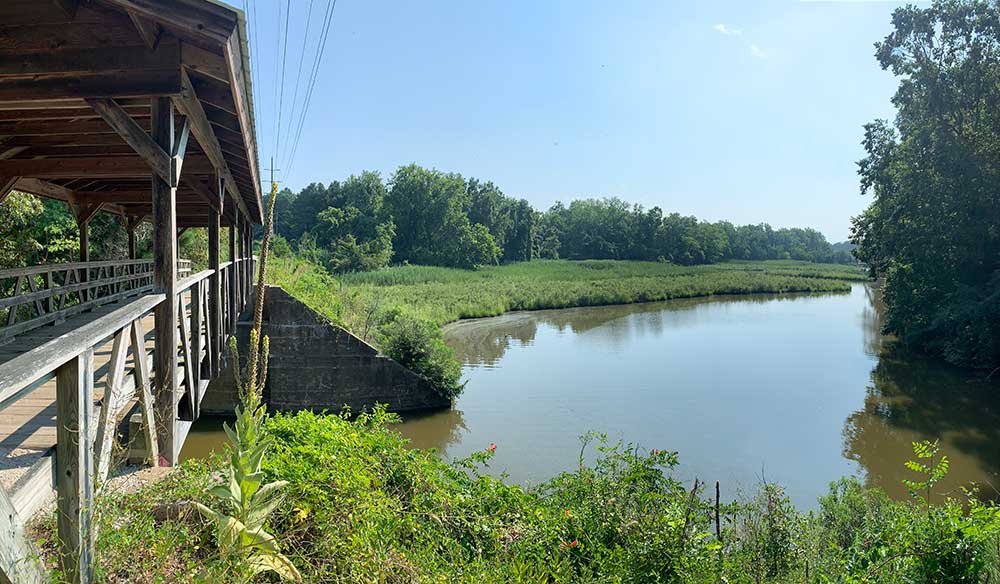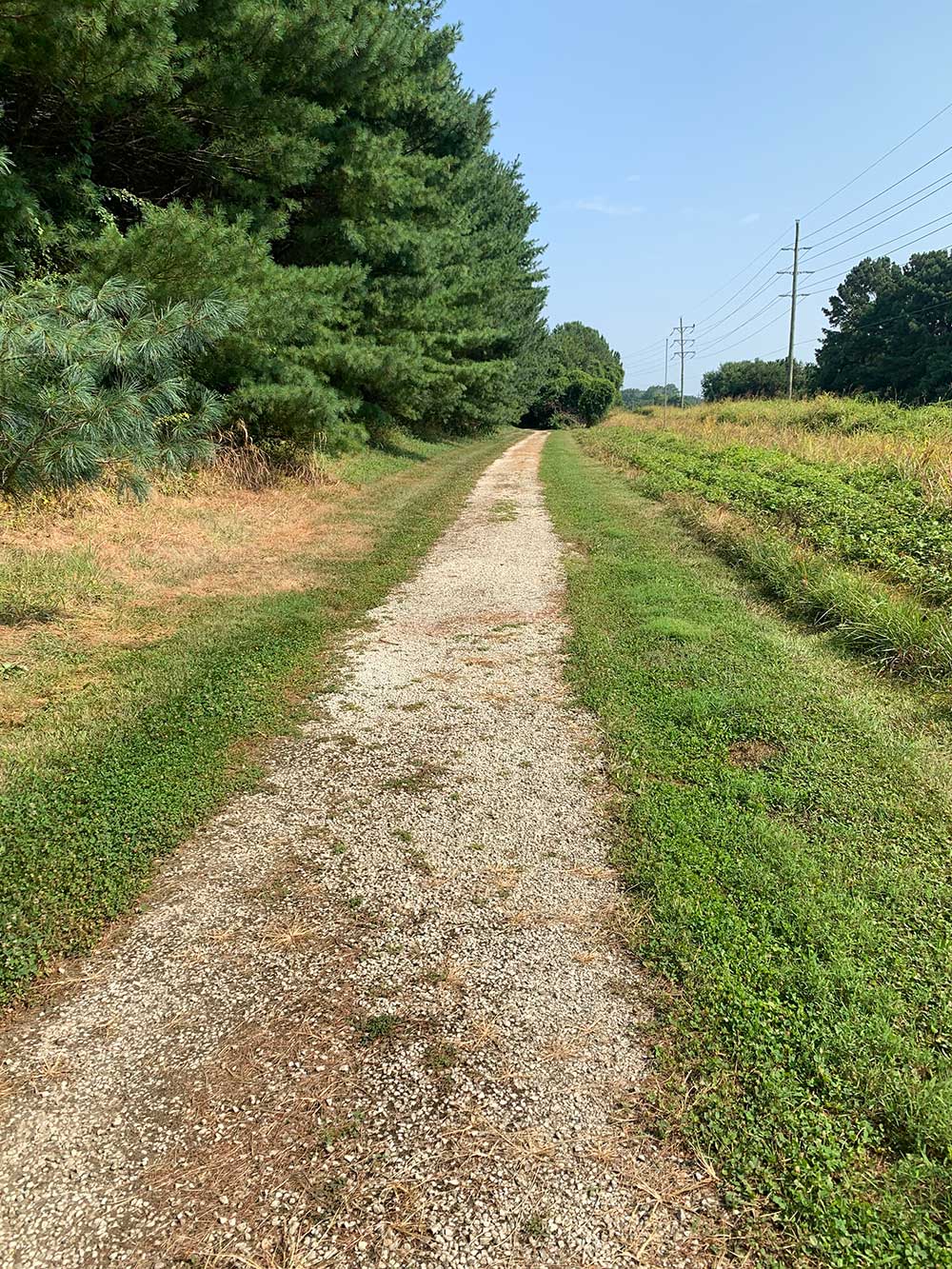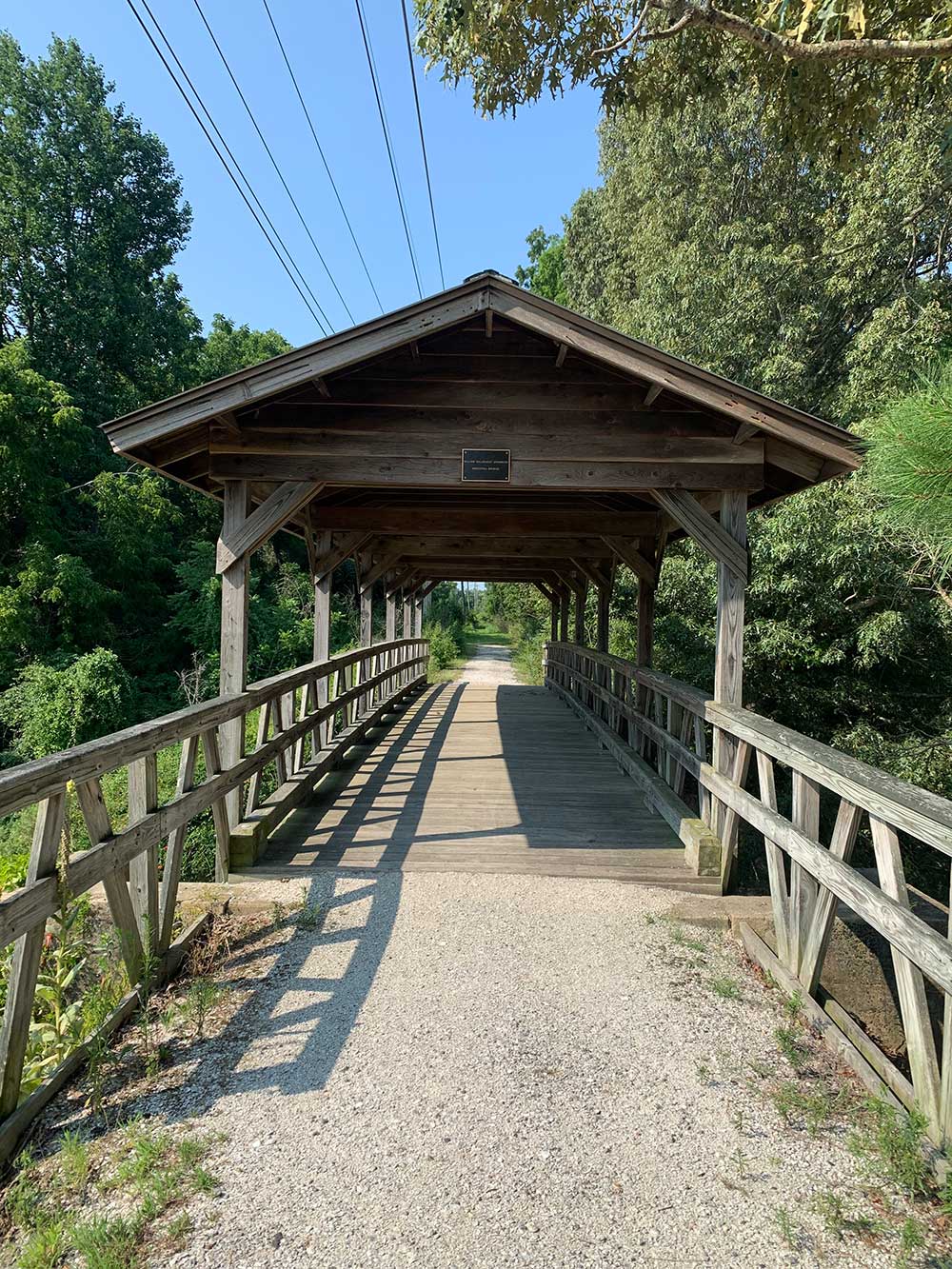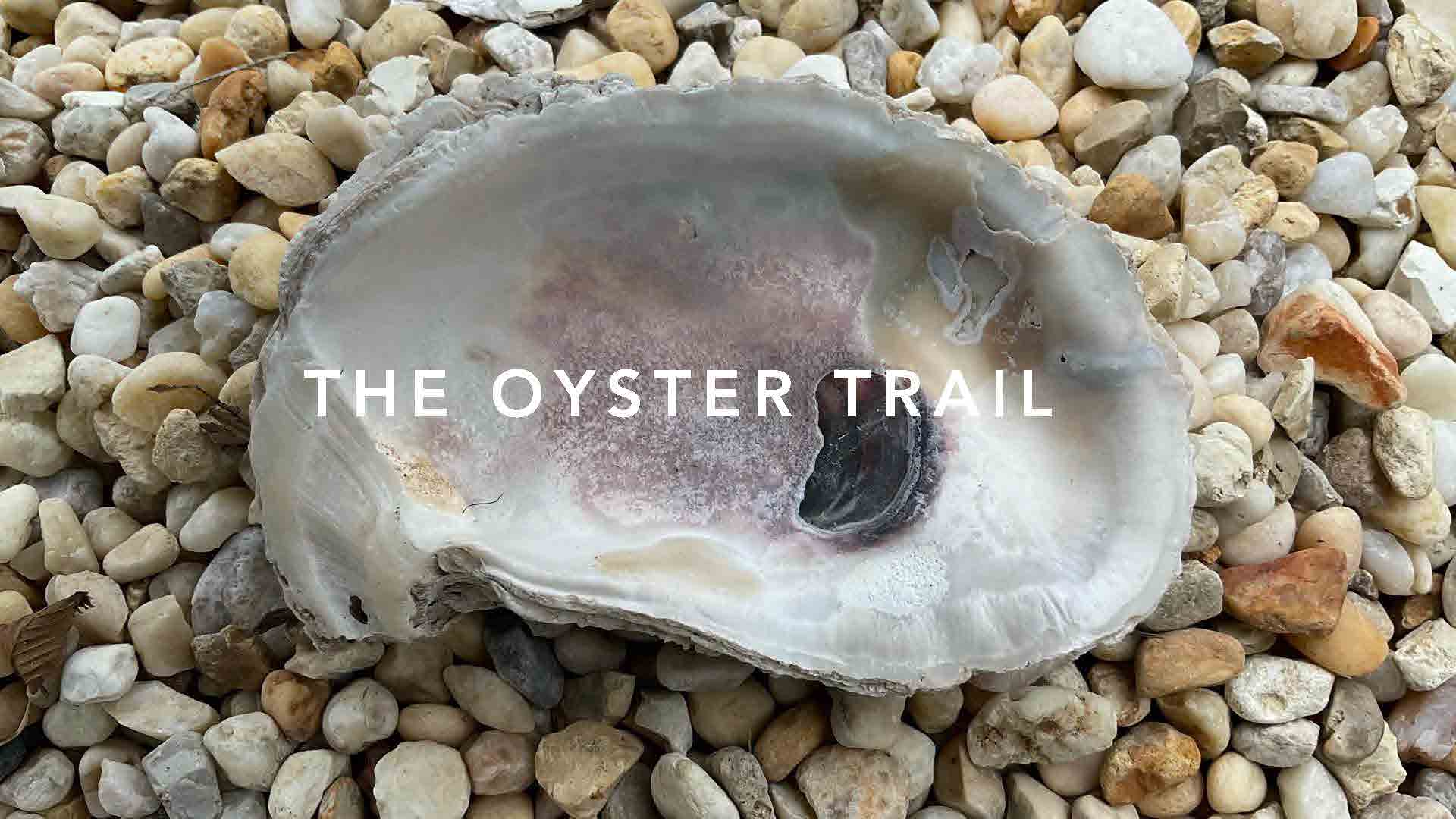Primi passi
Alla fine del 2023, alla città di Oxford è stato approvato un Kim Lamphier Bikeways Grant per la fattibilità iniziale e la progettazione della prima fase dell'Oyster Trail proposto - l'Oxford Parks Connector Trail.
La sovvenzione è destinata a un sentiero ricreativo ad uso condiviso che collegherà due parchi della città di Oxford con due parchi adiacenti di proprietà della Contea. Il progetto comprende anche lo studio dell'installazione di un'area di servizio per le biciclette. In definitiva, questo progetto pone le basi per la creazione di un percorso fuori strada per le persone e le famiglie che vanno in bicicletta per godersi la vita all'aria aperta, in particolare l'attuale Oxford Conservation Park, e sostiene anche la creazione di Oxford, MD, come punto di arrivo nella visione futura di un percorso ferroviario ciclopedonale che collega Oxford alla città di Easton. In linea con il nostro Comprehensive Plan e con il nostro Sustainable Community Plan, la città di Oxford ha lavorato con Talbot Thrive per migliorare la connessione tra i nostri parchi cittadini e l'Oxford Conservation Park della contea, sviluppando un sentiero multiuso sicuro e accessibile.
Chi era Kim Lamphier?
Kim Lamphier è stata un'instancabile sostenitrice dell'accesso sicuro alle biciclette in tutto il Maryland.
Nel corso degli anni, Kim si è occupata di questioni relative alle piccole imprese, alla sicurezza delle biciclette, alla protezione della fauna selvatica, alla riforma della giustizia penale e alla promozione della partecipazione dei giovani al governo. Ha lavorato alle campagne di alcune delle figure politiche più importanti del Maryland a tutti i livelli di governo. Nell'ultimo anno, il 2019, nei suoi ruoli con Trash Free Maryland e Bike Maryland, è stata la principale sostenitrice di due importanti vittorie legislative: il primo divieto di utilizzo del polistirolo in tutto il Paese e una legge che garantisce il finanziamento del programma Maryland's Bikeways Network. Ha lavorato per ottenere queste vittorie, anche mentre si stava riprendendo da tre mesi di trattamento chemioterapico intensivo e di fisioterapia post-operatoria. È stata una forza indomabile.
Nel 2020, l'Assemblea generale del Maryland ha votato per rinominare il Programma MDOT per le piste ciclabili in onore di Kim.
Il sogno: Un percorso da Oxford a Easton - Il sentiero delle ostriche
Immaginate di convertire la vecchia servitù ferroviaria del Maryland e del Delaware da Easton a Oxford in un percorso pedonale e ciclabile? Una recente esplorazione da parte di un membro del consiglio ha scoperto che il percorso è parzialmente visibile in diversi punti lungo Oxford Road ed è stato parzialmente mantenuto da proprietari privati dalla chiusura della linea ferroviaria nel 1996. Un parco lineare/trail potrebbe servire a collegare le strutture commerciali, storiche e culturali lungo un percorso ad uso condiviso, in grado di accogliere camminatori, amanti del jogging e ciclisti di tutte le età e livelli di fitness.
Completato dopo la Guerra Civile, l'Oxford Spur fu un'infrastruttura fondamentale che portò alla prosperità della regione dell'Eastern Shore Tidewater. La servitù di 66 metri di larghezza è stata abbandonata a metà degli anni '60 e il terreno è stato ceduto ai proprietari delle proprietà adiacenti. La sfida sarà quella di trovare un modo per recuperare l'accesso a una parte della vecchia servitù e le ricerche preliminari hanno indicato che sarà difficile, ma non insormontabile. La Rails to Trails Conservancy di Washington DC è stata di grande aiuto a molti altri gruppi che hanno portato a termine con successo progetti simili in altre località. Esistono più di 2.000 esempi di progetti di successo nel settore ferroviario in tutti i 50 Stati, quindi ci sono molti buoni precedenti da seguire. Il disegno di legge sulle infrastrutture, approvato di recente, contiene finanziamenti consistenti per progetti di trasporto attivo come questo.
Immaginate che in un prossimo futuro sarà possibile percorrere l'intero tragitto di 8 miglia da Oxford a Easton su un percorso verde alberato, sicuro e bello, che contribuirà a sostenere le attività commerciali locali e ad attrarre pedoni e ciclisti in un'area salubre e sicura sia per i visitatori che per i residenti della contea di Talbot.
Grazie al Membro del Consiglio Cameron J. Mactavish di Oxford MD
Il sogno...
CONVERTIRE LA STORICA FERROVIA DI OXFORD IN UN PERCORSO PEDONALE E CICLABILE
Anche se l'ultimo treno è passato prima del 1960, molte parti della vecchia ferrovia di Oxford e Easton esistono ancora oggi e sono percorribili a piedi.
SALUTE E SICUREZZA PER RESIDENTI E VISITATORI
Una pista pedonale e ciclabile dedicata migliorerà la salute e la sicurezza dei residenti e dei visitatori della contea di Talbot, togliendoli dalla strada.
della sempre più trafficata Oxford Road
BOOM PER LE IMPRESE LOCALI
L'aumento del traffico pedonale e ciclabile consentirà alle imprese locali di prosperare tutto l'anno. Sono stati completati più di 2000 progetti ferroviari in tutti i 50 Stati e l'impatto economico positivo dei progetti ferroviari è ben documentato.
COLLEGAMENTO ALLA POTENZIALE PISTA CICLABILE DI ST. PISTA CICLABILE DI ST. MICHAEL'S RD
La conversione di questa sezione e la creazione di un collegamento con la pista ciclabile di Easton creerà un "Oyster Loop" di 25 miglia che collegherà Oxford, Easton e St Michael's e si estenderà fino a McDaniel. Il traghetto di Oxford può essere utilizzato per completare l'anello.

Domande frequenti
Un sentiero non danneggia il valore della mia proprietà?
Gli studi condotti dopo che i sentieri sono stati operativi per un certo numero di anni, riportano costantemente che essi (i sentieri) sono stati migliori vicini di quanto gli scettici si aspettassero. Quando vengono valutati rispetto allo status quo, alcuni percepiscono un sentiero riadattato come una passività che potrebbe ridurre la loro qualità di vita. Tuttavia, con il passare del tempo è probabile che si verifichino due scenari che fanno svanire il negativismo. In primo luogo, l'esperienza con la pista rassicura i residenti vicini che i loro timori erano infondati o sopravvalutati. In secondo luogo, dato che la vicinanza a un sentiero è relativamente scarsa in molte comunità urbane, coloro che lo considerano un'attrattiva desiderabile probabilmente pagheranno un premio per le proprietà quando saranno messe in vendita. (Compton, 2019)
Articoli e studi
- L'impatto delle greenways sul valore degli immobili
- Vendita case vicino a Two Massachusetts Rail Trails
- Scelte pubbliche e valore della proprietà
- Piste ciclabili: sicurezza e valore della proprietà
- La pista ciclabile Mohawk-Hudson - Il suo impatto sulle proprietà residenziali adiacenti
- L'impatto del sentiero panoramico di Little Miami sul valore degli immobili residenziali unifamiliari
- Impatto dei percorsi ferroviari sul valore degli immobili- Un caso di studio della Minuteman Bikeway
- Sentieri ricreativi di Omaha: il loro effetto sul valore delle proprietà e sulla sicurezza pubblica
- Sintesi dello studio sull'impatto comunitario del sentiero della contea di Pinellas
Come può un sentiero ad uso condiviso funzionare in modo sicuro all'interno di un'area agricola attiva?
I sentieri e le aree agricole attive possono convivere in armonia, come dimostrano esempi provenienti da tutti gli Stati Uniti, che comprendono un'ampia gamma di livelli di utilizzo, superfici dei sentieri e politiche di gestione. Le seguenti strategie sono state essenziali per il successo dei sentieri nelle aree agricole:
- Recinzioni naturali e fisiche per delimitare chiaramente i sentieri e le aree agricole e fornire barriere.
- Agli agricoltori viene data la possibilità di inserire notifiche sul sentiero quando le operazioni agricole sarebbero altrimenti limitate o pericolose per gli utenti del sentiero.
- Attraversamenti controllati che consentano alle attrezzature agricole di raggiungere entrambi i lati del sentiero, ove necessario.
- Segnaletica per avvisare gli utenti del sentiero della presenza di operazioni agricole attive e per istruirli a rimanere sul sentiero (poiché il sentiero continuerà ad essere di proprietà dello Stato, i proprietari terrieri le cui proprietà confinano con il sentiero non sono responsabili delle attività di coloro che lasciano la proprietà dello Stato e sconfinano in terreni di proprietà privata)
- Creare gruppi o club di difesa per garantire la manutenzione e l'osservazione del sentiero per ridurre al minimo gli atti di vandalismo e incoraggiare un ambiente di autocontrollo.
Articoli:
Un sentiero non porterà criminalità e senzatetto nella mia proprietà?
Numerosi studi hanno dimostrato che lo sviluppo di progetti ferroviari non comporta un aumento della criminalità. La National Rails to Trails Coalition ha studiato l'impatto di tre grandi progetti ferroviari nel 1996 e ha scoperto che l'incidenza dei crimini sui sentieri era molto bassa rispetto al tasso di criminalità generale. I loro studio di sentieri rurali conclusi:
- Si stima che ci siano 26 milioni di utenti annuali sui 254 sentieri rurali censiti che coprono 5.282 miglia.
- Il tasso nazionale di scippi nelle aree rurali è di 19 per 100.000 abitanti; nessuno dei sentieri ferroviari rurali ha riportato scippi nel 1995 e solo uno ha riportato un incidente nel 1996.
- Il tasso nazionale di aggressioni aggravate nelle zone rurali è di 203 incidenti ogni 100.000 persone; solo tre percorsi ferroviari rurali hanno riportato tre aggressioni nel 1995 e lo stesso numero nel 1996.
- A livello nazionale, ci sono stati 26 stupri forzati ogni 100.000 abitanti delle zone rurali; due strade ferrate rurali hanno denunciato uno stupro nel 1995 e un sentiero nel 1996.
- Il tasso nazionale di omicidi nelle aree rurali è di 5 su 100.000; nessuno dei percorsi ferroviari rurali ha registrato un omicidio nel periodo di due anni.
Articoli e studi
- Percorsi ferroviari e comunità sicure
- Effetti dei sentieri su quartieri, valore delle case, sicurezza e qualità della vita
- I vicini di casa vicini alle piste ciclabili dovrebbero preoccuparsi della criminalità?
- Valutazione dell'effetto del Burke-Gilman Trail sui valori immobiliari e sulla criminalità
- La pista ciclabile Mohawk-Hudson - Il suo impatto sulle proprietà residenziali adiacenti
Come possono le attività di caccia coesistere in modo sicuro con un sentiero ad uso condiviso nelle vicinanze?
Negli Stati Uniti ci sono più di 22.000 miglia di sentieri ferroviari e, come si può immaginare, molti di essi attraversano zone rurali dove la caccia è una parte importante della comunità. I gestori dei sentieri (alcuni potrebbero essere sovrintendenti di foreste statali o nazionali) hanno fornito diverse soluzioni ai conflitti che possono sorgere sui sentieri a causa della caccia. In effetti, le prove storiche della compatibilità tra sentieri e caccia sono profondamente radicate nei percorsi escursionistici a singolo binario come l'Appalachian Trail. Uno dei più antichi sentieri ferroviari della nazione, lo Stony Creek Railroad Grade, lungo 20 miglia, nella contea di Dauphin (PA), attraversa oltre 40.000 acri di terreni di caccia statali ed è in funzione dal 1943 senza che si siano verificati incidenti.
Alcuni esempi di altri sentieri ferroviari che sono stati realizzati in prossimità o attraverso terreni di caccia pubblici e privati e che hanno accolto con successo gli utenti dei sentieri e i cacciatori.
Articoli
- Clarion, PA - La ferrovia di Little Toby Creek e la ferrovia di West Penn (Il Clarion-Little Toby Creek Trail e il West Penn Trail richiedono che gli utenti dei sentieri indossino una tuta arancione durante la stagione della caccia).
- Area faunistica di Springvalley (Xenia, OH) Una pista ciclabile multiuso si snoda lungo una delle paludi più cacciate dello Stato. Karen Kelley, direttrice del Marion County Park District, riconosce l'importanza della pista per la conservazione dell'habitat della fauna selvatica, "Il nostro distretto del parco cercherà di mostrare attraverso il railtrail le paludi e le praterie di alto fusto in stagione per sostenere gli sforzi di conservazione e mantenimento dell'habitat della fauna selvatica".
- Buffer di divieto di caccia: Alcuni sentieri che attraversano terreni di caccia pubblici e privati prevedono un "cuscinetto di divieto di caccia". (Amherst, MA) È vietato portare armi da fuoco cariche entro 150 piedi dal sentiero, il che corrisponde alla legge statale del Massachusetts sulla caccia in prossimità di strade asfaltate. Tuttavia, i cacciatori utilizzano spesso la ferrovia per andare e tornare dai luoghi di caccia.
- Via verde della valle del Genesee
(New York occidentale) Su questo sentiero multiuso di 90 miglia, i cacciatori possono utilizzare il sentiero per accedere ai luoghi di caccia, ma non possono sparare da o attraverso il sentiero. Il sentiero non è chiuso durante la stagione di caccia e uno dei proprietari terrieri adiacenti è un club di caccia. - Sintesi dei regolamenti di caccia del Maryland
- Il Guida completa alla caccia e alla pesca nel Maryland Stati:
- È illegale sparare al bersaglio sui terreni statali, tranne che nelle aree designate. (I sentieri ferroviari sono terreni statali)
- È illegale cacciare, sparare o catturare animali selvatici entro 150 metri da qualsiasi edificio o campo occupato da esseri umani senza il permesso del proprietario o dell'occupante.
La mia proprietà è adiacente al corridoio ferroviario. In che modo posso trarre vantaggio dal percorso ferroviario e in che modo il percorso fornirà sviluppo economico a quest'area?
Il modo in cui i proprietari terrieri lungo il corridoio ferroviario trarranno vantaggio dal percorso ferroviario attraverso le opportunità commerciali dipende da loro e dalla loro imprenditorialità. I funzionari dello sviluppo economico della contea di Talbot lavoreranno attivamente con coloro che esprimono interesse per un'iniziativa imprenditoriale, al fine di massimizzare tale opportunità e il suo successo. Inoltre, i funzionari della contea addetti alla pianificazione e alla zonizzazione si impegnano a garantire la giusta zonizzazione lungo il corridoio ferroviario per supportare qualsiasi proposta commerciale che si presenti. L'agriturismo e i sentieri in generale possono essere un importante motore economico per l'intera area, soprattutto con l'aumento dei visitatori previsto dal Frederick Douglass Park sul fiume Tuckahoe.
Articoli e studi
- Portare affari: Una guida per attirare i cicloturisti nelle comunità dei canali di New York
- Il Parco storico nazionale del C&O Canal è un motore economico per le comunità circostanti
- Trasformare i corridoi ferroviari in motori economici
- Impatto economico del sentiero ferroviario di Shanendoah
"La riconversione dei vecchi tracciati ferroviari in vivaci sistemi di sentieri richiede pianificazione, impegno della comunità, partnership collaborative e buone pratiche innovative, unite all'attenzione per l'equità e l'inclusione. I risultati sono sistemi ferroviari che offrono una varietà di opzioni abitative a prezzi accessibili, promuovono opportunità economiche e di trasporto e migliorano la qualità della vita di tutti i residenti".
Le foto qui sotto sono state scattate durante una recente escursione alla ricerca del vecchio tracciato ferroviario lungo l'Oxford Corridor. Si prega di non oltrepassare la proprietà privata.




